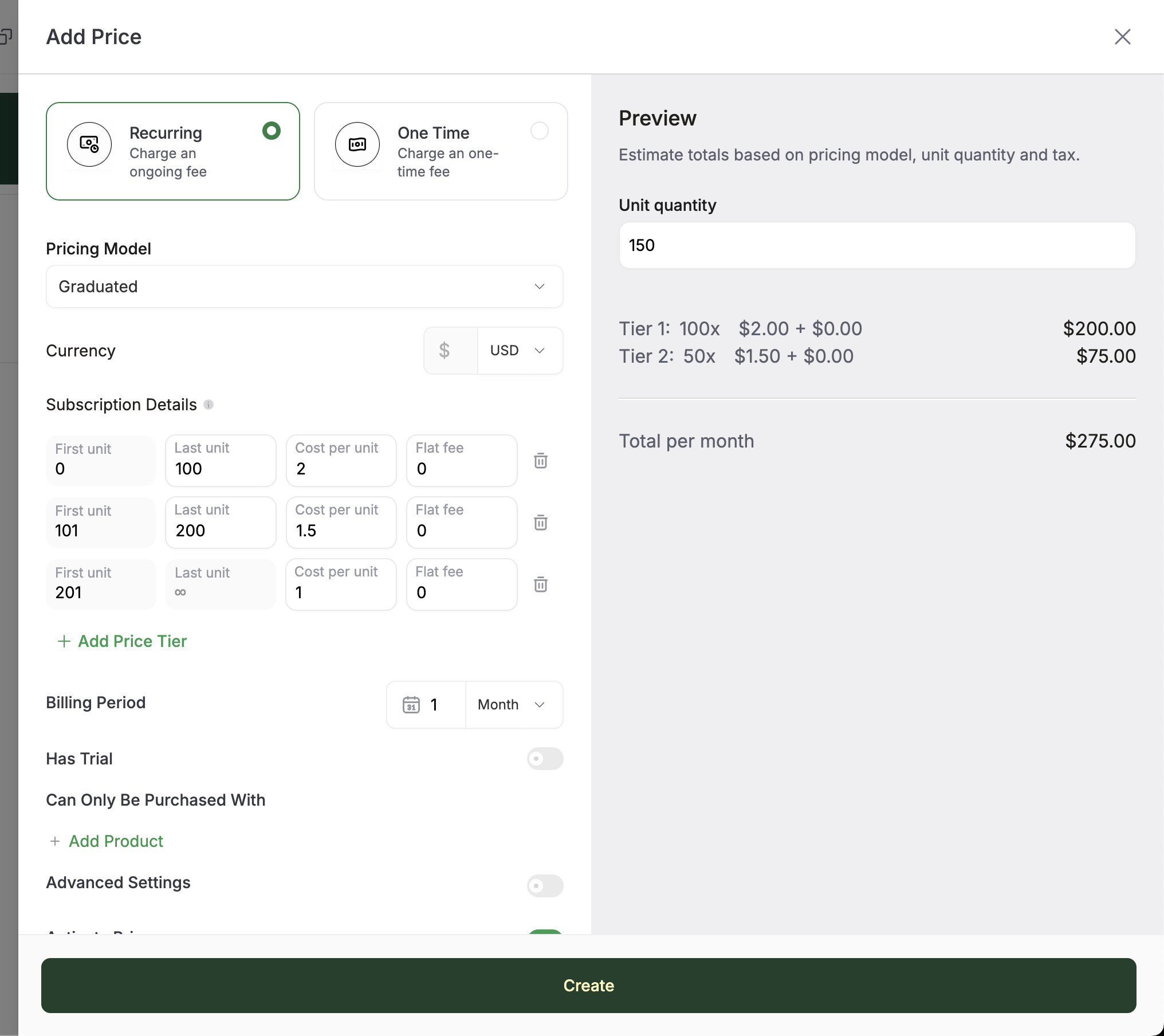Graduated
The graduated pricing model lets you charge different rates for consumption within each usage tier, allowing customers to pay progressively higher or lower prices only for the units that fall within each tier.
Graduated pricing is a pricing model where the cost per unit changes based on the quantity purchased, with different price tiers applied to different ranges of usage or volume. In this model, each unit within a specific tier is charged at a particular price, and the price adjusts when the purchase or usage moves into the next tier.
For example, a utility company might use graduated pricing for water consumption:
-
First 100 gallons: $2 per gallon
-
Next 100 gallons (101–200 gallons): $1.50 per gallon
-
Above 200 gallons: $1 per gallon
In this scenario, if in a given month a customer uses 150 gallons of water, the first 100 gallons would be charged at $2 per gallon, and the next 50 gallons (which fall within the second tier) would be charged at $1.50 per gallon. So the customer’s total for that month would be $275.

The key feature of graduated pricing is that different portions of the total usage are charged at different rates. As usage increases and moves into higher tiers, the cost per unit decreases for those additional units. This is particularly useful when you want to create incentives for customers to use or buy more, but with a structure that rewards incremental increases in quantity.